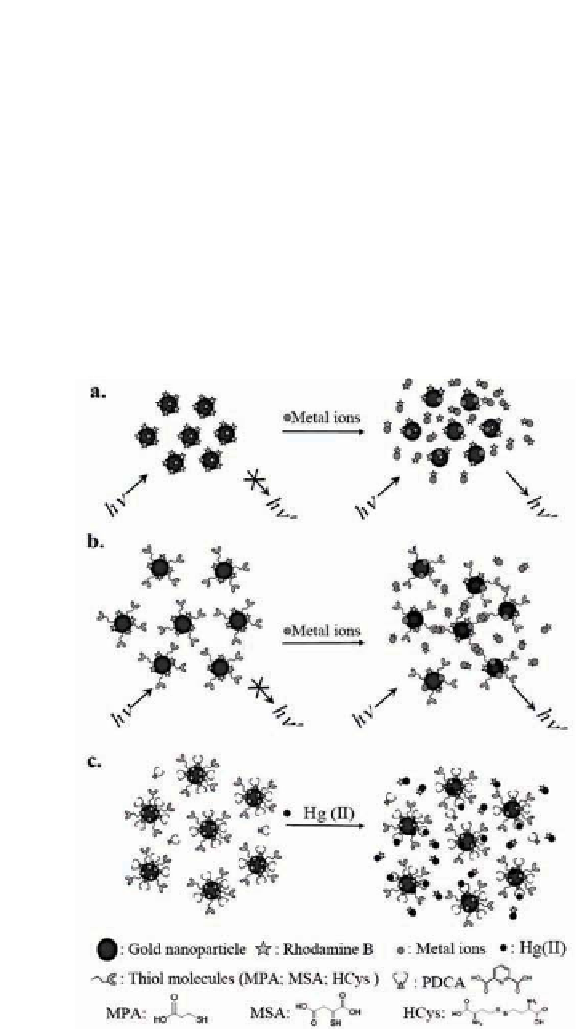Biomedical Engineering Reference
In-Depth Information
T-lymphocytic cells with single cell resolution.
102,103
The luorescent
metal plasmon-coupled probes are Alexa Fluor 647-labeled
concanavalin A (con A) bound to
N
-(2-mercapto-propionyl)glycine-
coated Ag NPs. Imaging results demonstrate that cells labeled by this
probe are 20-fold brighter than those labeled with free con A.
The quenching properties of Au NPs have been applied to develop
a Hg
2+
sensor in aqueous solution. When the dye rhodamine B (RB)
is adsorbed onto Au NPs surfaces, quenching occurs, leading to weak
luorescence. However, in the presence of Hg
2+
ions, RB molecules
are quickly replaced and released to the bulk solution, leading
to increased lorescence of the RB in the 10 minute window (see
Fig. 10.12).
104
(A)
(B)
(C)
Figure 10.12
Schematic representations of Hg(II) nanosensors that
operate on the basis of modulation of the FRET between RB
and Au NPs. Reprinted with permission from Ref. 104.



Search WWH ::

Custom Search